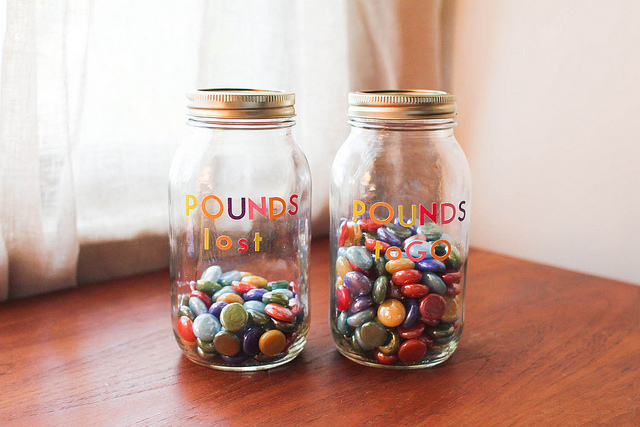 When it comes to the fitness & health industry, theories change, and trends come and go–but the truth always remains the same. Weight loss is one of the most popular yet misunderstood topics that falls victim to assumptions and misconceptions. The phrases “Lose weight in days!” “Eat any foods you want and still get results!” and “Melt fat and lose inches quickly!” are all too common. Below are some of the most traditional myths related to losing weight:
When it comes to the fitness & health industry, theories change, and trends come and go–but the truth always remains the same. Weight loss is one of the most popular yet misunderstood topics that falls victim to assumptions and misconceptions. The phrases “Lose weight in days!” “Eat any foods you want and still get results!” and “Melt fat and lose inches quickly!” are all too common. Below are some of the most traditional myths related to losing weight:
Low-fat diets are best: When a whole food group or macronutrient is cut out of a person’s eating regimen, it usually doesn’t mean anything positive. Fat not only is needed for protection of the organs and cell membrane function, but also plays an active role in growth, development and absorption of vitamins ingested. Without fat, weight loss will not be maintained.
Skipping meals helps with weight loss: One may think this is the case, but losing weight through skipping meals is not sustainable. Maintaining a constant flow of energy is vital to not gaining weight. If you starve yourself, the body goes into survival mode and slows the metabolic rate down. When you do eat, it will store the calories consumed because it is “unsure” of the next meal. Hunger associated with skipping meals can lead an individual to crave high-fat and high-sugar foods. Not eating may also contribute and exacerbate other medical conditions such as Diabetes.
Lifting weights will not help: Actually quite the contrary! Weight and resistance training will increase lean muscle mass, which in turn will cause an increase in calories burned over time.
Doing extensive amounts of cardio solely will yield most results: In the beginning, increasing cardio exercise will result in weight loss. However, the body will eventually plateau, and no changes will be seen. The best method is to combine both cardio and resistance training with a nutrient-dense diet to achieve weight loss.
Sit-ups lead to belly fat loss: Some individuals may try to target fat in their stomach area by doing abdominal exercises. This technique will build core strength. Unfortunately, one can NOT spot reduce. Weight loss comes from a combination of cardiovascular exercise, healthy nutrition, and a solid resistance training program–and you will lose weight and inches all over, not just one particular area.
Don’t eat right before bed: There is no concrete evidence that supports this claim. Rather, its WHAT is being eaten before bedtime that is the problem. People often make poor choices late at night, such as ice cream, cookies, or something that is high in sugar and virtually lacking in nutrients. If you feel you need a little snack before bed, make it something light, healthy, and soothing, like a cup of warm almond milk with cinnamon.
Avoid carbohydrates: The issue isn’t carbs itself, but the KINDS that are being consumed. Avoid white, processed and refined sugars and stick to whole grain breads, brown rice and sweet potatoes, which offer more nutrients and fiber. Carbohydrates are essential in a well-balanced diet because they provide energy and restore depleted glycogen levels after a period of fasting or exercise.
Burn 3500 calories to lose 1 pound: Losing weight is not as simple as “calories in, calories out.” There are numerous factors that come into play, including the kinds of foods you consume. Your body is a complex biochemical system that processes the foods differently according to what they are–not just burn them like a furnace, calorie by calorie. And after a certain amount of weight loss period, you stop losing weight although you are cutting back by the same amount of calories you are taking in. Hormones, sleep, stress, age, gender, and genetics all affect weight loss in addition to nutrition and exercise.
Snacking is always a bad choice: Having food in between main meals may actually help with hunger and prevent overeating or binges. Eating 4-5 smaller meals throughout the day may be more beneficial than eating all of your calories in one or two meals.
Foods labeled “reduced” or “low” fat or sugar are a healthy choice: Although it may seem promising, looks can be deceiving. Foods in this category may have just as many calories as the full-fat or full-sugar types. Foods “low in fat” may have added sugar or salt and foods “low in sugar” may have added fat, flour or starch that lend itself just as bad as the original version. Two wrongs do not always make a right!
Do you have any questions about weight loss myths? Please ask in the comments section below!
Related: Reader Question – How do I lose weight on a Vegan Diet?
Dietary Thermogenesis – Why it’s the next thing in Weight Loss
__
Photo: Melanie Levi via Flickr




